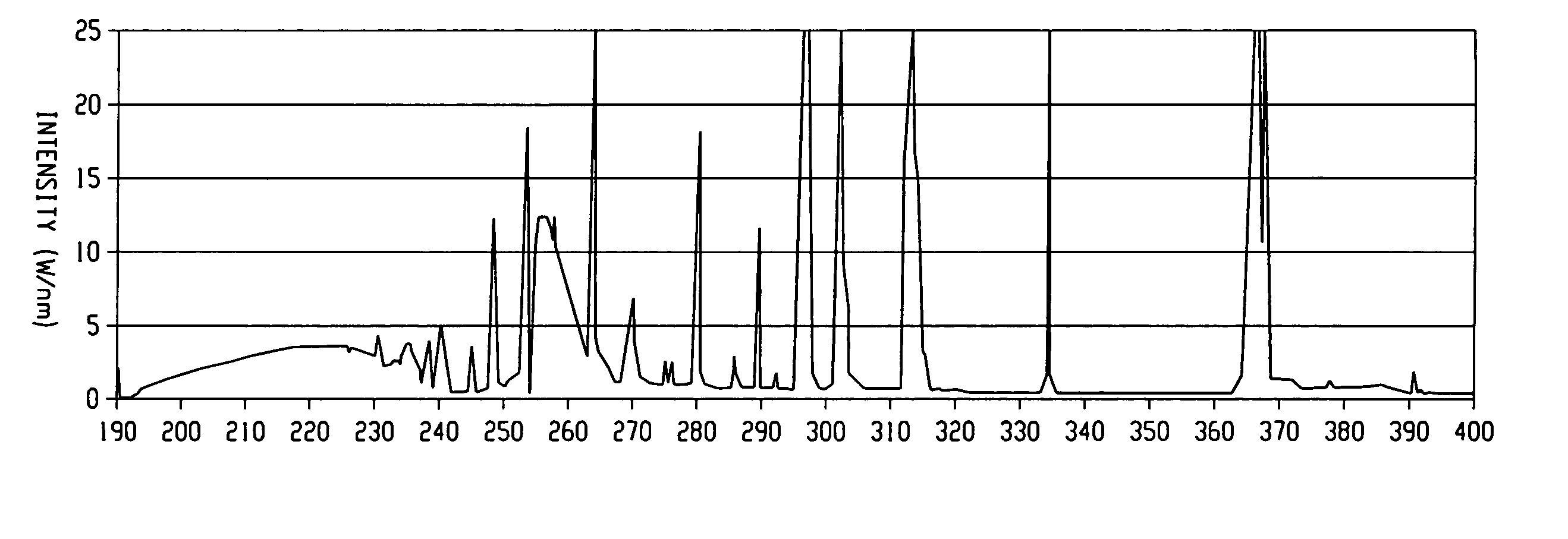Ultraviolet assisted porogen removal and/or curing processes for forming porous low k dielectrics
a low-k dielectric and curing process technology, applied basic electric elements, electrical equipment, etc., can solve the problems of difficult removing of porogen, insufficient scaling down of devices, and inability to integrate porous low-k materials in the manufacture of semiconductor devices, etc., to achieve the effect of effectively removing porogen materials
- Summary
- Abstract
- Description
- Claims
- Application Information
AI Technical Summary
Benefits of technology
Problems solved by technology
Method used
Image
Examples
example 1
[0056] In this example, silicon substrates that contained a proprietary CVD deposited SiCOH porogen containing films were provided by a manufacturer. The films were exposed to different ultraviolet radiation patterns at 350° C. in a RapidCure Exposure tool available from Axcelis Technologies, Inc. and subjected to FTIR analysis. The ultraviolet radiation pattern was produced with Type I or Type II microwave electrodeless bulbs in an inert atmosphere. A control that did not include exposure to UV radiation was included in the analysis. As shown in FIG. 3, the porogen related absorbance at about 3,000 cm−1 clearly illustrates a dependence on wavelength exposure. Exposure to ultraviolet radiation having no substantial radiation at wavelengths less than 240 nm (Type I bulb, spectra shown in FIG. 1) did not exhibit any detectable amounts of porogen removal since the absorbance spectra for exposure to wavelengths greater than 240 nm was clearly similar to the control. In contrast, exposur...
example 2
[0057] In this example, silicon substrates that contained a proprietary CVD deposited SiCOH porogen containing film were provided by a manufacturer. The substrates were processed in accordance with Example 1 using a Type I microwave electrodeless bulb. FIG. 4 illustrates the spectra before and after UV exposure. As is evidenced by the peak absorption at about 950 cm−1, exposure to UV radiation caused a broadening in absorption intensity related to Si—O crosslinking, indicating an increase in Si—O crosslinking (primarily caused by a decrease in Si—OH functionality, the peak associated with S1—CH3 absorbance at about 1300 cm−1 did not change before or after exposure). Analysis of the intensity pattern related to porogen absorption at about 3000 cm−1 showed that the porogen remains in the low k dielectric film after exposure to the ultraviolet radiation.
PUM
 Login to View More
Login to View More Abstract
Description
Claims
Application Information
 Login to View More
Login to View More - R&D
- Intellectual Property
- Life Sciences
- Materials
- Tech Scout
- Unparalleled Data Quality
- Higher Quality Content
- 60% Fewer Hallucinations
Browse by: Latest US Patents, China's latest patents, Technical Efficacy Thesaurus, Application Domain, Technology Topic, Popular Technical Reports.
© 2025 PatSnap. All rights reserved.Legal|Privacy policy|Modern Slavery Act Transparency Statement|Sitemap|About US| Contact US: help@patsnap.com



